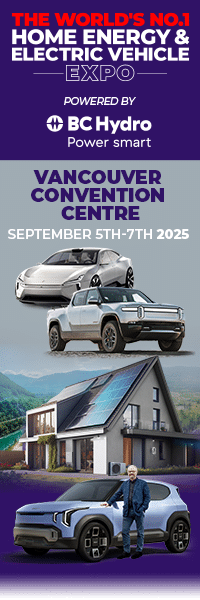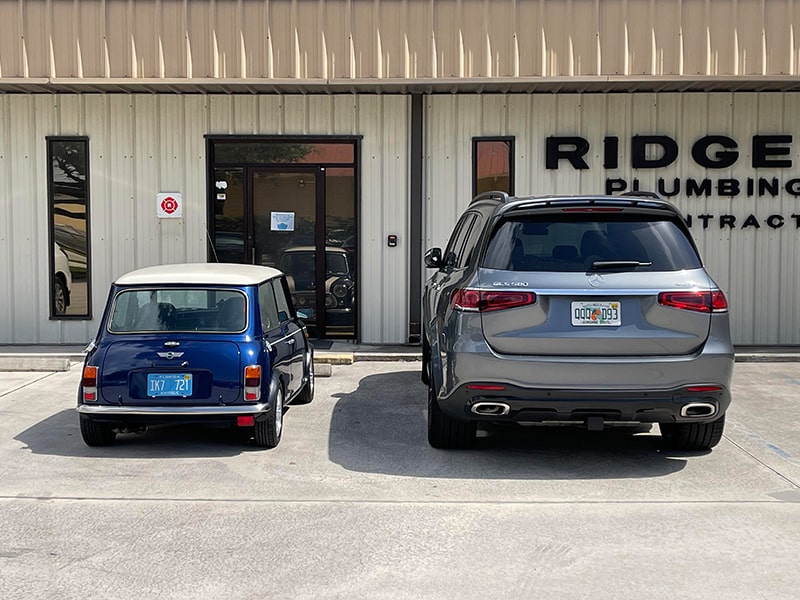
Image credit: URG8RB8 on Reddit
Thoughts on how to combat the increasing size of cars.
I love small cars. My first car was a mini – the original kind. Since then, I’ve owned a Renault Clio, the first Audi A3 and two Mk1 Mazda MX-5s. When I needed a larger car to lug a family and related gear around, I chose an estate, not an SUV.
The general rule is that smaller cars are cheaper. As they get bigger across a model range – whether A, B, C or 3, 5, 7 – they get more expensive.
As well as being cheaper; smaller, lighter cars are collectively better for us. They are less polluting to make and run. They’re safer, at least to others. And they take up less space – on the road and parked.
Referring to the shift to larger vehicle types, a 2022 U.S. Environmental Protection Agency report said:
The move towards vehicle types with lower fuel economy and higher CO2 emissions has offset some of the fleetwide benefits that otherwise would have been achieved from the improvements within each vehicle type.
In other words, much of the emissions progress that’s been made possible through legislation and advances in technology has been wiped out by the mass adoption of SUVs.
At a time when we’re striving for more efficiency and lower environmental impact, we’re stuck in a vicious circle.
Car companies need to make products that make them money. Although historically they have sold in higher volumes, smaller cars typically have slim margins for both manufacturers and dealers. So, it’s understandable that they put their major efforts into the models that produce the best return.
At the same time, there appears to be an insatiable demand for higher-performing, more luxurious and expensive cars. Berkshire Hathaway’s Businesswire forecasts that the SUV market is projected to grow from $885.8 billion USD in 2022 to $1,221.7 billion in 2027, at a CAGR of 6.6%.
Sedans and estates/wagons were the first to suffer. The same 2022 U.S. EPA report found that:
In 2021 sales of sedans and wagons fell to 26% of the market, well below the 50% share they held as recently as 2013, and far below the 80% market share they held in 1975.
And now the humble hatchback is under threat.
In October 2022, after 47 years in production, over seven generations, including 12 straight years at the top of the UK sales chart, Ford announced that the Fiesta nameplate will be discontinued. The decline in Fiesta sales has corresponded with the rise of its Puma mini-SUV. So, although Ford is retaining sales, they are shifting towards bigger, heavier models.
I even read recently about the demise of convertibles, which was attributed to there being fewer small, 3-door cars on which to base them.
The transition to EVs means smaller cars are even more difficult for manufacturers to make profitable at lower prices. The best-selling EV in the UK in 2022 was the small(ish) Tesla Model Y. Even the entry ‘poverty spec’ model starts at £44,990 – and that’s after the recent £7,000 price drop.
So, cars are getting bigger, heavier and more expensive – a trend that seems set to continue.
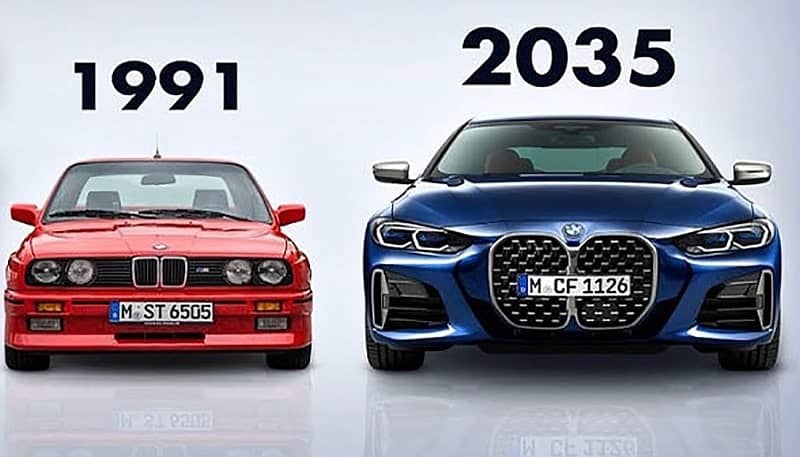
Meme showing the expectation that cars will get even bigger
Appeal
As much as I’d like to see SUVs abandoned en masse for public transport, it’s not going to happen overnight. So, I thought I’d think about what could be an achievable step towards greater efficiency – a resurgence of smaller, more affordable, less impactful vehicles.
To break the cycle of increasing size and weight, car companies need to find new ways of making these vehicles viable. I’m not talking about a few high-priced, niche vehicles. I mean cars with realistic margins, sold at scale.
To do this they’ll need to be appealing enough that we buy them in sufficient quantities. Importantly, at prices that allow their manufacturers to make a reasonable profit.
Let’s quickly break down the idea of appeal. Broadly speaking, it comes in two forms: rational and emotional.
Rational appeal
This is relatively straightforward and relates to our functional needs. Can I afford to buy and run it? Will it fit where I have to park it? Can it carry what I need it to?
Most of the time, modern cars meet the functional standards that fulfil our rational sides. In fact, I’d argue that they far exceed our requirements.
My 2015 diesel Dad-wagon (family estate car) will probably reach speeds of over 120mph. I say probably, because I’ve never tried. Why would I? It would be dangerous and irresponsible (not to say illegal) on public roads. And it’s not like I’m ever going to ‘track’ it.
I realise that qualities I appreciate, like its acceleration, require some of the hardware needed to achieve its inflated top speed. But I still think it’s over-engineered for its intended use.
‘Range anxiety’ is driving car manufacturers to fit electric vehicles with vast, heavy batteries that far exceed most users’ day-to-day needs. This results in two-tonne-plus monsters needing bigger brakes, with tyres that wear more quickly, etc, etc.
It’s not uncommon for today’s ordinary family EVs to accelerate from 0-60mph in around five seconds. It’ll be interesting to see how that affects future accident rates and insurance premiums, but that’s another post…
Sam Livingstone Director at Car Design Research speaks very eloquently about paring back the weight of cars in his recent appearance on the Autovista Group podcast – listen here.
Like Sam, in Episode 4 of their excellent Looking Out podcast, Joe Simpson and Drew Smith discuss the opportunity for electric cars to have a lower range – with all the associated benefits of reduced weight, crash safety requirements and cost.
Emotional appeal
This is more complex. Inner-directed motivators, such as ‘How will it make me feel?’ combine with sometimes uncomfortable outer-directed drivers, like ‘How will it make me appear to others?’
I would contend that emotional appeal is the most powerful force behind our choice of ride. After where we live, a vehicle is often the most expensive thing we spend our hard-earned money on. So, it’s a powerful – and conveniently mobile, signal of our social standing and values.
In this article, Drew Smith explains how Eugene Wei puts the need to signal social status to our peers down to us being ‘Status-seeking monkeys’. As much as we might hate to admit it, it’s true. He’s not alone, Scott Galloway attributes much of the iPhone’s success to it being a means of attracting a better partner (I’m only slightly paraphrasing).
Trading up, not down
To me, the key to reinvigorating the popularity of smaller vehicles is twofold. Firstly, scale back the unnecessary, excessive functional capabilities of our modern-day leviathans. Secondly, and this is the vital bit – invest some of the cost savings in value-added design and features that enhance emotional appeal.
Convincing a large number of people to downsize means the new breed of vehicles needs to remain aspirational, and crucially be more desirable than larger cars. To be successful, they can’t only feel like taking away.
That doesn’t mean adding shallow, faddish elements, or gratuitous styling. I’m talking about genuine improvements that build deeper connection and meaning.
Let’s look at a few potential techniques, noting that they are not mutually exclusive.
New utility
Practicality is perhaps the most well-trodden path for smaller, cheaper vehicles. Smaller = more practical = cheaper. How dull.
Beyond the inherent functional benefits of smaller size, like manoeuvrability and ease of parking, EV platforms bring packaging improvements, enabling larger interiors and load spaces. But what about other opportunities for increased utility?
Although not exclusive to small cars, there have been several recent examples of value-added utility features that go beyond our rational needs and tap into aspirational, emotional appeal.
One is the Ford F150 Lightning’s power outlets, enabling the use of leisure equipment or power tools. Another is Canoo’s flip-down tables and pull-out drawers. Also from Ford are the Bronco’s features for outdoor adventure, including an integrated bottle opener.
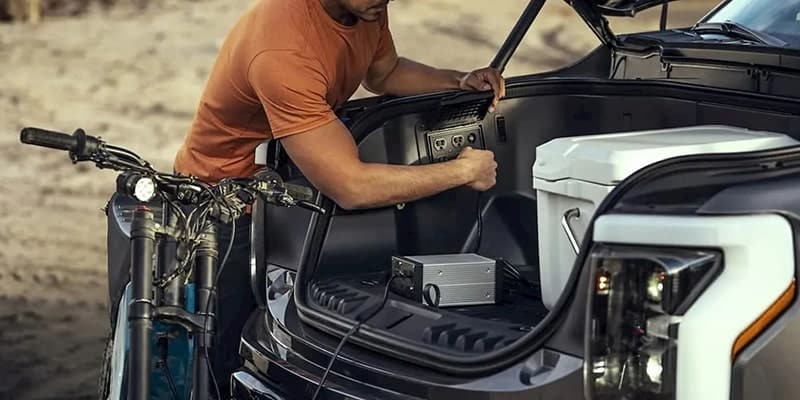
Electric power outlets in the Ford F150 Lightning's frunk

Fold-out table and pull-out drawer on the Canoo pick-up truck

Slide-out tailgate tray and integrated bottle opener on the Ford Bronco
As EVs increasingly form part of our personal ecosystem, there will be all sorts of other potential opportunities from power-sharing to other, as yet unimagined uses for a clean, connected, mobile power source.
Character and personality
Another technique used to inject appeal (joy even) into small cars is the application of character and personality. This is often manifested as ‘cuteness’ which is particularly congruent with their reduced size.
The rebooted Mini, VW Beetle, and Fiat 500 are enduring examples. None of them are the most practical cars in their class, nor are they the cheapest. But their character and personality have been critical to their broad appeal and commercial success.
This approach looks set to continue with Renault’s recent electric reinterpretations of its iconic 4 and 5 models.
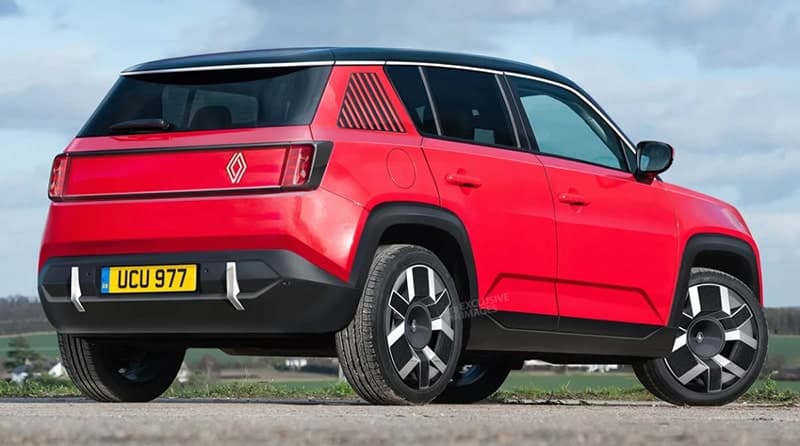
2025 Renault 4
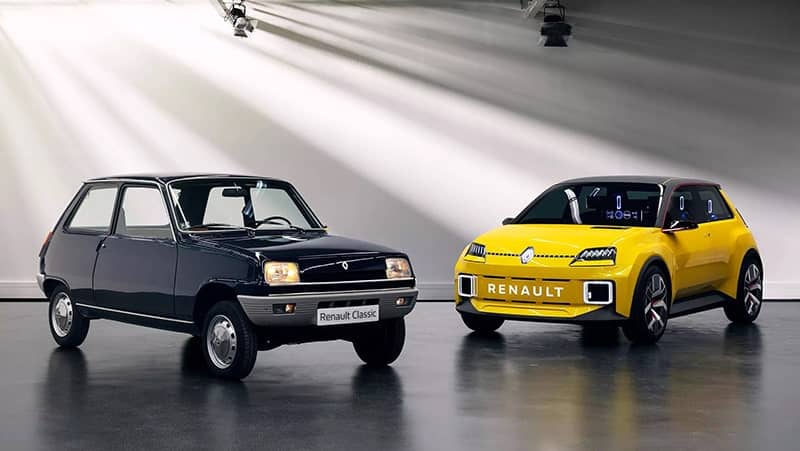
Original Renault 5 and R5 E-Tech prototype
These cars draw on carefully selected heritage elements of the original models, and are served with a slice of nostalgia. But it doesn’t have to be that way.
The Honda Urban EV Concept, which was greeted with great excitement when it was first revealed in Frankfurt in 2017, was not a reinterpretation of a previous model (although it prompted comparisons to the Giugiaro-designed Mk1 Golf). Sadly, the translation of the concept to the production model was less successful. Which Car Australia commented:
‘Few were prepared for how insidiously the design influence of a potato had crept into the stylists’ work.’
Harsh, but sadly true – a missed opportunity.
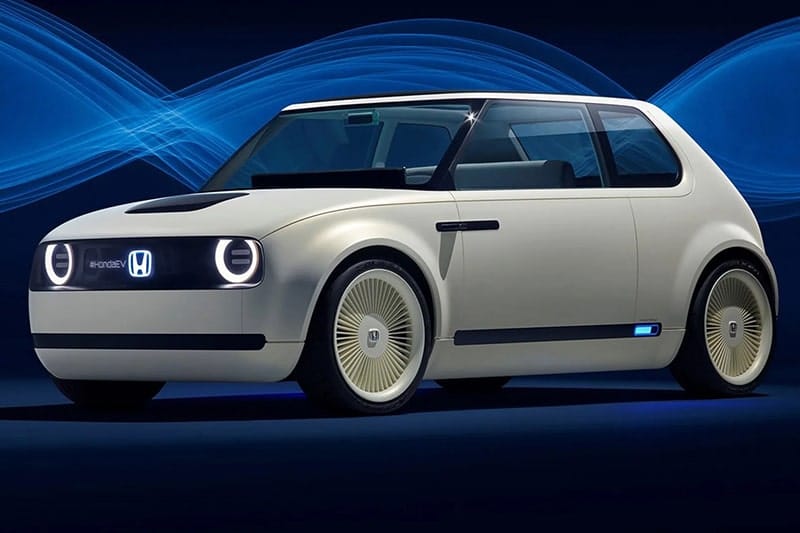
Honda Urban EV concept
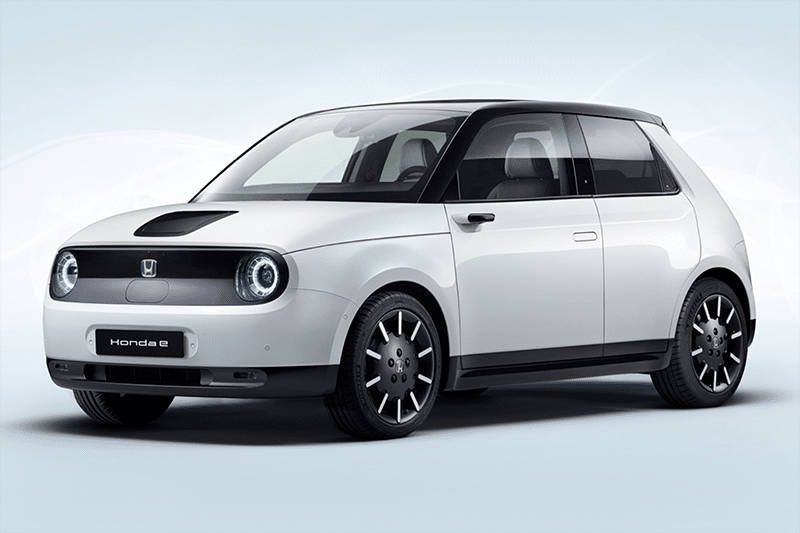
Production Honda e
Pop cultural relevance
Often closely related to the previous technique, but not the same thing. These vehicles tap into popular culture and come to represent a certain lifestyle, attitude, or period in time. It’s difficult, but not impossible to do intentionally.
Some cars take a shortcut and become ‘cool’ through their associations with music, television, or film. It’s perhaps surprising that we haven’t seen more of this in the age of celebrity, influencers and collaborations.
Christopher Butt’s excellent series expands on this topic, explaining how Hyundai is the current leader in this space through its application of the ‘Legacy Remix’ genre.
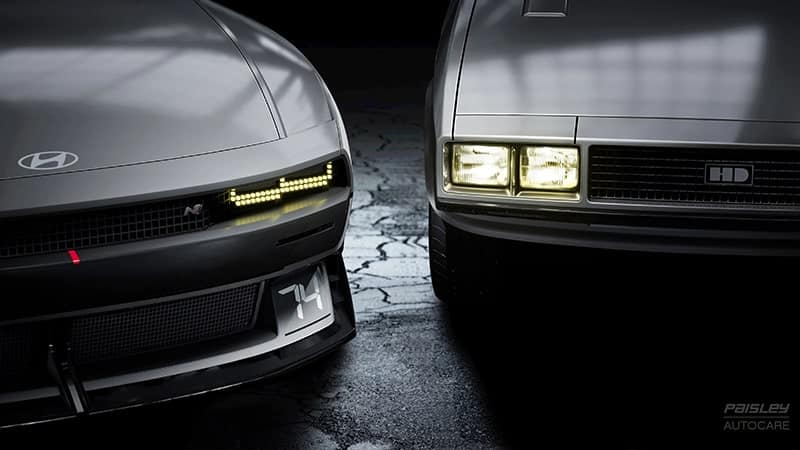
Hyundai N Vision 74
Performance
Hiking performance upwards is a well-trodden path in making small cars more appealing. The whole hot-hatch genre, for example.
But do manufacturers need to take the performance to such extremes? The Toyota GR Yaris reaches 100kph/62mph in just 5.5 seconds and costs a hair under £30,000.
Does the performance need to be that blistering (and expensive) to be appealing though? How about a car that feels good to drive, balancing light weight, acceleration, a modest top speed, and responsive handling?
Small electric cars with their high torque and low-slung batteries should be perfectly suited to such a formula. Provided the temptation to install a whacking-great battery for extended range can be avoided, of course…
Perhaps the idea could be taken a little further, to something that takes practice and skill to drive well; building feelings of harmony between operator and machine, resulting in a sense of mastery. It wouldn’t necessarily need to be so small, but such a vehicle that celebrates movement and the journey, rather than isolating you from it was discussed by ‘father-of-micromobility’ Horace Dediu in his enlightening Next Billion Cars podcast interview with Drew Smith. Reading this back, I realise I’m describing something more akin to a motorbike. Albeit safer, with more seats and at least some form of weather protection.
Environmental and societal values
Writing for Wired, Dawn Stover explains that more and more people are switching from planes to trains to reduce their carbon footprint. And there’s a term for it: Flight shame (or ‘Flygskam’ in Swedish). She goes on to say that ‘SUVskam’ isn’t a thing – yet.
Could huge gas-guzzling, or even kilowatt-munching SUVs become socially unacceptable? Likely to happen through younger generations first, it’s not hard to imagine teenagers becoming embarrassed at being dropped off at school in that kind of car.
Could reasonably-priced, smaller, more efficient, less environmentally impactful vehicles that overtly signal climate-responsible values become aspirational and popular?
Toyota achieved this to some degree with the Prius, when it was adopted by the Hollywood set. They didn’t need to broadcast their status like the rest of us mere mortals, they were more interested in value signalling. But celebrity adoption has influence and all the earned media must have boosted the Prius’ popularity in the mainstream market.
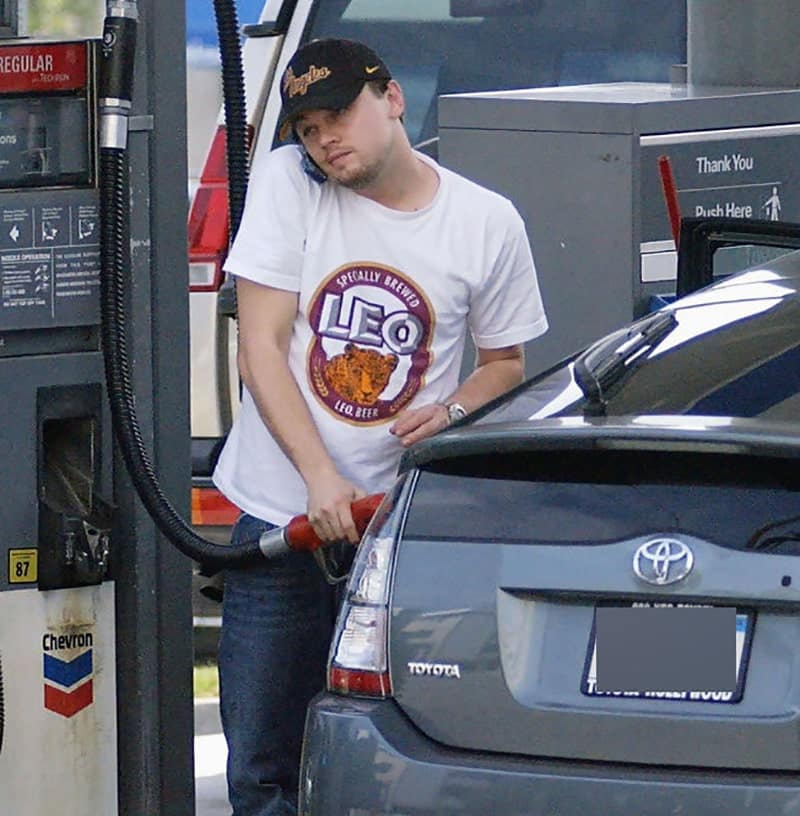
Leonardo DiCaprio refuelling his Toyota Prius
Virtue signalling was similarly part of Tesla’s appeal to early adopters. But the size and price of the Model S meant a big dollop of good old-fashioned status came with it.
Although not particularly small, Citroën bravely swam against the ‘More is more’ tide with their refreshing Oli concept, which boldly proclaimed ‘Enough!’ Several commentators argued that the visual design language has a bit of catching up to do, but hopefully, it’s an encouraging early signal of more to come from this philosophy.
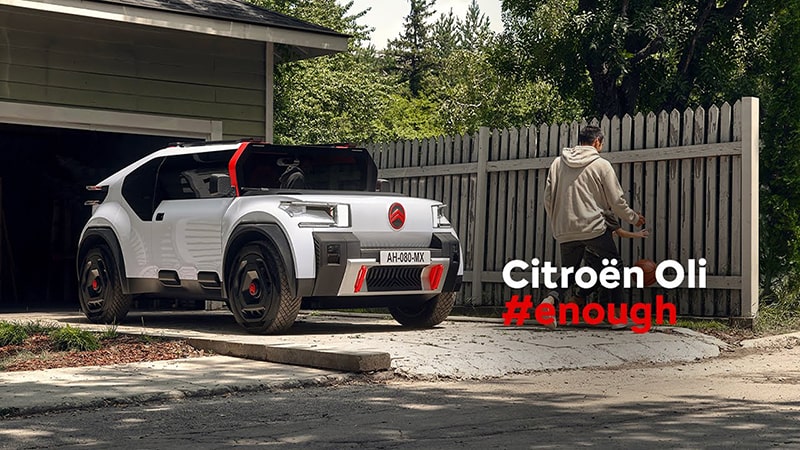
Citroën Oli concept – Enough!
At the very compact end of the scale, highly efficient Quadricycles, Microcars and the ‘Brommobielen’ that are gaining popularity in the Netherlands hope to attain a dash of urban, Vespa-like cool. But none seem to have quite pulled it off yet.
Surely…
Surely there’s a space for smaller ‘added value’ aspirational vehicles that don’t aim to be the absolute cheapest, but instead encourage people to scale back from the ever-enlarging vehicles that are so prevalent on our roads.
Surely less environmentally impactful, smaller and cheaper cars can be made more appealing and profitable.
The techniques I’ve suggested are just the start. The brief to design a small(er) car with a different form of aspirational appeal to a sizeable market should throw up all sorts of exciting, novel ideas. Solutions that go way beyond the vehicle itself into alternative usage and ownership experiences too.
But bringing about the shift to smaller cars will be particularly tough, because it relies on the movement of a significant number of motorists – building a critical mass. In her Wired article, Stover suggests:
‘People are buying bigger vehicles mostly for one reason: Everyone else is.’
It’s understandable that people don’t want to drive a smaller car when they’re surrounded by the equivalent of armoured vehicles.
Who will be brave enough to take on this challenge, creating a solution that zags while the others are zigging? Sadly, I’m not seeing many encouraging signs from the legacy OEMs.
Richard Surridge of future mobility talent acquisition business Avant, thinks Tesla could and should do it (see here). Perhaps more likely will be a so-called ‘New Asian’ brand without deeply entrenched brand equity or legacy assets. Or a disruptive entrant like Arrival, Dyson, Apple, or Sony. Maybe even a start-up that can harness the power of a Beginner’s mind?
In any case, I’d love to be involved. Thinking beyond traditional paradigms to create a desirable, compact, responsible, affordable yet profitable (and fun) form of transportation. Something that I – and many others, would be proud to buy and own.
Image credits: Ford, Canoo, Renault, Honda, Hyundai, Citroën
About the author
Tim studied Transportation Design at Coventry University, before embarking upon his 20-plus year career in brand strategy, innovation and design. He led the rapid growth of his own agency, Webb deVlam, which he sold in 2016.
Since then, he was a Director at Plan, a London-based product strategy consultancy focused on the mobility and consumer tech sectors.
Tim now works independently, having founded TP Consulting in 2022. He helps brand owners and agencies with complex innovation and design strategy challenges.
